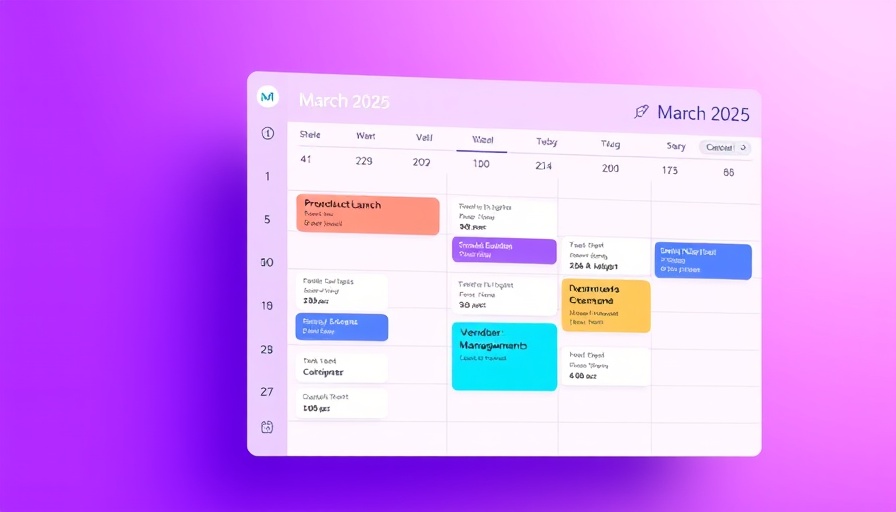
Crafting Your PR Calendar: A Strategic Approach for 2025
As 2025 approaches, business owners must proactively plan their PR strategies to boost brand visibility and drive sales. A well-structured PR calendar serves as a roadmap, ensuring your communication efforts align with your business goals. This article offers actionable insights into developing a compelling PR calendar tailored for businesses generating $2M–$10M+ in annual revenue.
Understanding the Importance of a PR Calendar
A PR calendar is not just a scheduling tool; it is an essential component of your overall marketing strategy. It enables you to coordinate campaigns, ensure timely communication, and monitor public perception effectively. For growing companies, a PR calendar helps streamline collaboration among teams, allowing for better resource allocation and timely execution of initiatives.
Key Components of an Effective PR Calendar
Your PR calendar should include several critical elements:
- Timelines: Define the duration of campaigns, including pre-launch, launch, and post-launch phases.
- Campaign Goals: Outline specific objectives for each initiative, whether boosting awareness or driving sales.
- Target Audiences: Identify the main audiences for each campaign and consider their preferences and behaviors.
- Media Opportunities: Highlight key dates, such as national holidays or industry events, that can enhance your PR efforts.
Creating Your PR Calendar: Step-by-Step Guide
Look no further than this simple, step-by-step process:
- Assess Your Existing Strategies: Evaluate your current PR efforts to identify what worked and what didn’t.
- Identify Key Dates: Research relevant dates that may boost your campaign’s impact.
- Allocate Resources: Determine who will handle different aspects of your PR efforts, ensuring clear responsibility.
- Utilize Tools: Employ software tools that facilitate collaboration, streamline workflows, and enhance project management efficiency.
Real-World Example: A PR Calendar in Action
Consider a mid-sized fashion company gearing up for fall. Their PR calendar may include key events like fashion weeks, seasonal launches, and promotional campaigns timed around holiday shopping. By scheduling these in advance, they can secure media placements and influencer partnerships, creating a buzz in the industry.
Tips for Scalability: Making Your PR Calendar a Dynamic Tool
As your business evolves, so will your PR needs. Regularly update your calendar and invite team input to ensure it remains relevant. By adopting agile practices, you can pivot in response to market changes, enhance collaboration, and keep your strategies aligned with overall business developments.
Final Thoughts: Why Your PR Calendar Matters
Investing time in developing a PR calendar is critical for businesses seeking sustained growth. By strategically planning communications and anticipating industry trends, you position your organization as a leader in your field. Scale your operations effectively by harnessing the power of collaboration, process optimization, and superior project management.
Ready to elevate your PR strategy for 2025? Begin implementing these insights today to build a roadmap that drives visibility and facilitates growth.
 Add Row
Add Row  Add
Add 



Write A Comment